Vicent Cucarella Ramón - Benjamin Drew
Здесь есть возможность читать онлайн «Vicent Cucarella Ramón - Benjamin Drew» — ознакомительный отрывок электронной книги совершенно бесплатно, а после прочтения отрывка купить полную версию. В некоторых случаях можно слушать аудио, скачать через торрент в формате fb2 и присутствует краткое содержание. Жанр: unrecognised, на английском языке. Описание произведения, (предисловие) а так же отзывы посетителей доступны на портале библиотеки ЛибКат.
- Название:Benjamin Drew
- Автор:
- Жанр:
- Год:неизвестен
- ISBN:нет данных
- Рейтинг книги:3 / 5. Голосов: 1
-
Избранное:Добавить в избранное
- Отзывы:
-
Ваша оценка:
- 60
- 1
- 2
- 3
- 4
- 5
Benjamin Drew: краткое содержание, описание и аннотация
Предлагаем к чтению аннотацию, описание, краткое содержание или предисловие (зависит от того, что написал сам автор книги «Benjamin Drew»). Если вы не нашли необходимую информацию о книге — напишите в комментариях, мы постараемся отыскать её.
Benjamin Drew — читать онлайн ознакомительный отрывок
Ниже представлен текст книги, разбитый по страницам. Система сохранения места последней прочитанной страницы, позволяет с удобством читать онлайн бесплатно книгу «Benjamin Drew», без необходимости каждый раз заново искать на чём Вы остановились. Поставьте закладку, и сможете в любой момент перейти на страницу, на которой закончили чтение.
Интервал:
Закладка:
Other ex-fugitives like Mrs. John Little or Thomas Jones communicate their terrible experiences with alcohol in an attempt to condemn its destructive nature and reclaim their morally accepted and acceptable selves in Canada. They also make clear the difference between the corrupted and alcoholized U.S. and the welcoming Canada, best summoned in Mrs. John Little’s own words: “I now enjoy my life very well – I have nothing to complain of”. Bridgen precisely informs that “an additional reason for practising temperance was to fight prejudice. African Canadians constantly faced racist thinking that judged an entire group by the behaviour of individuals” (72). For his part, William Grose acknowledges that “as a general thing, the colored people are more sober and industrious than in the States”. On these positions, Afua Cooper declares that “among Blacks, like whites, allegiance to temperance signified middle-class respectability and good moral character” (“ Doing Battle in Freedom’s Cause ” 288). Through their attachment to the temperance ideals, the ex-slave’s testimonies put forth their own legitimizing message that accentuates the moral and social differences between a condemned U.S. and a merciful Canada.
In sum, temperance and anti-alcohol behavior legitimized the new African Canadians’ sense of place and also allowed them to present themselves as not only respectable but also as Canadian citizens in their own right. Eager to gain respect, advance economically and battle prejudice, ex-slaves embraced temperance as Black Canadians, whether as individuals or as voluntary members of a society. With this move, they imagined and created a more rooted version of civil society for the refugees of American chattel slavery. William Lyons’s conditioned praise of his new country is nothing but a proof of this when he intentionally avows: “there is less whiskey drinking by colored people here, than in any place I know of”.
Even if the Black fugitives’ efforts to become proper Canadians is undeniable, it also recognisable that, regardless of their intention to live by the idiosyncrasy of British North America, their testimonies in A North-Side View of Slavery: The Refugee, or the Narratives of Fugitive Slaves in Canada remain surprisingly oblivious of the concern of political equality for the new African Canadian inhabitants. The ex-slaves eloquently voice various forms of racial discrimination, with special attention to the school segregation in Canada, but are silent over their supposed right to vote. Contrarily, there appears a great effort to expose the exslaves’ economic progress in Canada, that results in another central concern of Drew’s volume. Again, William Grose’s testimony exemplifies this view when he comments
I have been through both Upper and Lower Canada, and I have found the colored people keeping stores, farming, etc., and doing well. I have made more money since I came here, than I made in the United States. I know several colored people who have become wealthy by industry – owning horses and carriages, – one who was a fellowservant of mine, now owns two span of horses, and two as fine carriages as there are on the bank. As a general thing, the colored people are more sober and industrious than in the States: there they feel when they have money, that they cannot make what use they would like of it, they are so kept down, so looked down upon. Here they have something to do with their money, and put it to a good purpose.
Other testimonies that are very prolific in praising Canada against the tyranny of a slavery-based U.S. are the words by William Howard, who claims: “[After I escaped] I stopped a while in the free States, but came here on account of my friends being here…Canada is the best place tthat ever I saw; I can make more money here than anywhere else I know of”. John A Hunter: “I feel more like a man – I feel that I am a man a great deal more than I did a year ago. A year ago I was in bondage…A great many slaves know nothing of Canada – they don’t know that there is such a country”. Henry Williamson: “I heard when I was coming that Canada was a cold and dreary country; but it is as healthy a place as a man can find. The colored people tell me the climate agrees with them, and I do know it is so”. The now African Canadian citizens choose to glorify Canada since, regardless of the suspicious consideration of British North American citizens, it is a country that has granted them the chance to escape from the hell of slavery.
Canada is equally lauded for its racial integration in churches and schools, as it appears in the collection when it is affirmed that “colored youths are attending lectures in the University”. This is by no means just another political move for these Blacks ex-fugitives. Education, the act of reading and writing, became crucial in slavery times for the ontological birth of the African slave. Acquiring the skills of literacy granted the enslaved freedom but also the epistemological drive to become thinking citizens and, therefore, to fully participate as active agents in the construction of a more egalitarian, fair, and free society. That Canada grants the new Black Canadians the opportunity to get an education is much more than an act of inclusion. In fact, it represents the yearned acknowledgement of their citizenship and their humanity. Therefore, a large number of the testimonies in Drew’s collection revolve around the question of education and their gratitude over it. J. C. Brown emphasizes: “Our children growing up in this country [Canada] and not having the fear of any white man, and being taught to read write, will grow up entirely different from their fathers – of more benefit to themselves, or more benefit to the government, and will be more able to set good examples to the rising generation”. In a similar vein, we also find the accounts of Phillip Younger: “Before I came here, I resided in the free States. I came here in consequence of the passage of the Fugitive Slave Bill. It was a hardship at first; but I feel better here – more like a man I know I am – than in the States. I suffer from want of education. I manage by skill and experience and industry – but it’s as if feeling my way in the dark”. Or that of Isaac Riley: “I went to St. Catharines and got fifty cents a day. By and by, I heard of Mr. King’s settlement – I came here and have got along well. My children can get good learning here”.
The active participation of the African Canadians ex-slaves is also corroborated in 1852, with the arrival of the Great Western Railway and what it represented as a – takeoff moment for Canada West. In his ethnographic endeavor and his interviews, Drew was particularly impressed by the Black self-help “True Band” associations that so desired to improve schools, provide for the sick and impoverished, and thereby work against the “begging” system. This is another important aspect to take into account, since by rejecting the “begging” system, the Black citizens were showing their capability to provide for their new country and to eagerly demonstrate their attachment to the ethical values of hard-work and responsibility, which were fundamental in the Anglo-Canadian religious ethics. This is also the living proof of the Black Canadians’ truthful effort to be considered and be part of their new country, as has been explained above.
Not surprisingly, A North-Side View of Slavery: The Refugee, or the Narratives of Fugitive Slaves in Canada eschews a topic that was also present in the new reality of Black Canadians when they arrived in the country: racism and prejudice. Even if the fugitive slaves were welcomed with mixed feelings of acceptance and racism, Drew’s testimonies wished to overlook this thorny issue fearing that it could stain their ultimate goal: to picture an image of the U.S. as a slavery-based and racist society versus the benevolent and desirable Canada, which should be finally chosen as the new place to be for free Black people. Thomas Hedgebeth’s testimony can be singled out as one of the scarce moments in which we can read a negative racist-driven image of Canada: “In regard to Canada, I like the country, the soil, as well as any country I ever saw. I like the laws, which leave a man as much freedom as a man can have, – still there is prejudice here. The colored people are trying to remove this by improving and educating themselves, and by industry, to show that they are a people who have minds, and that all they want is cultivating”. And the honest view of R. van Branken is also worth bringing up: “Among some people here, there is as much prejudice as in the States, but they cannot carry it out as they do in the States: the law makes the difference” (305).
Читать дальшеИнтервал:
Закладка:
Похожие книги на «Benjamin Drew»
Представляем Вашему вниманию похожие книги на «Benjamin Drew» списком для выбора. Мы отобрали схожую по названию и смыслу литературу в надежде предоставить читателям больше вариантов отыскать новые, интересные, ещё непрочитанные произведения.
Обсуждение, отзывы о книге «Benjamin Drew» и просто собственные мнения читателей. Оставьте ваши комментарии, напишите, что Вы думаете о произведении, его смысле или главных героях. Укажите что конкретно понравилось, а что нет, и почему Вы так считаете.
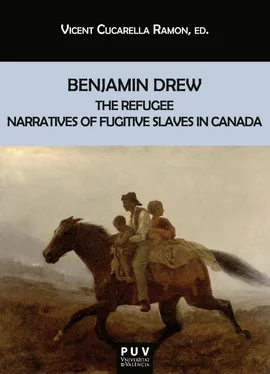

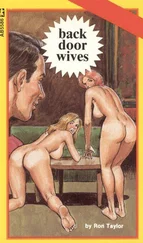

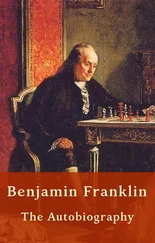
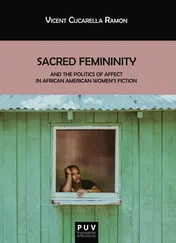


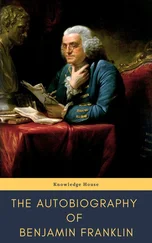

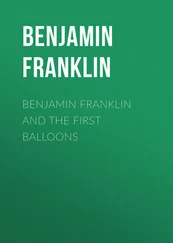
![Benjamin Franklin - Memoirs of Benjamin Franklin; Written by Himself. [Vol. 2 of 2]](/books/747975/benjamin-franklin-memoirs-of-benjamin-franklin-wr-thumb.webp)
![Benjamin Franklin - Memoirs of Benjamin Franklin; Written by Himself. [Vol. 1 of 2]](/books/748053/benjamin-franklin-memoirs-of-benjamin-franklin-wr-thumb.webp)